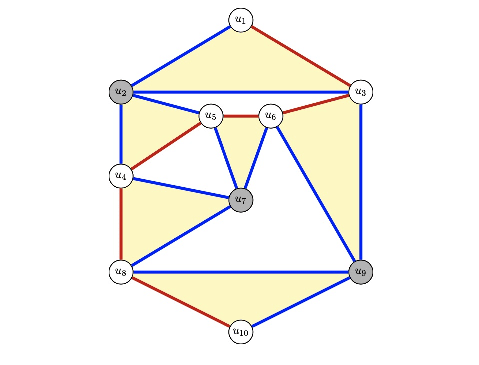Mathematicians have disproved the hypothesis regarding the existence of a bunk bed.
The preprint of the article has been published in the electronic archive arXiv.org. The hypothesis concerning the bunk bed relates to percolation theory—a branch of mathematics that studies the emergence of connected structures in independent media. It was proposed in the 1980s by Dutch physicist Peter Kasteleyn, who aimed to mathematically describe how liquids seep through porous surfaces, such as how water fills a sponge.
The hypothesis is based on random connections between vertices in an imagined graph resembling a bunk bed. It asserts that the probability of a connection occurring between two vertices at the same level is higher than the probability of a connection between levels.
This assertion intuitively seems correct; however, until recently, no convincing proof had been found to confirm or refute it. Skeptics believed that the statement was too general and could not hold true in all cases.
In mathematics, efforts are usually directed towards finding a proof of a statement's validity, with attempts to disprove being quite rare. However, a team of mathematicians from Russia—Igor Pak, Nikita Gladkov, and Alexander Zimin—managed to find a counterexample that disproved the hypothesis.

"In fact, I first encountered the bunk bed with my friend and colleague Nikita Gladkov during our first year at university. We were dormitory neighbors, and we had that very bunk bed in our room," jokes Alexander Zimin. "In the case of the bunk bed hypothesis, we understood that it was true for most scenarios. But we were curious if there were rare cases where it would be false."
Initially, the team attempted to find a counterexample using machine learning methods. The researchers trained a neural network to identify potential connections in graphs and tried to explore all possibilities. However, for graphs with more than nine vertices, the number of possible connection configurations grew rapidly, and the scale of the problem quickly exceeded analytical capabilities. No proof was found.
Then they adapted hypergraph methods, for which a disproof of the bunk bed hypothesis already existed, to classical graphs and constructed a very complex structure containing thousands of vertices and edges. In the resulting graph, the probability of a connection between the upper and lower levels turned out to be slightly higher than the probability of a connection at the lower level, which allowed them to disprove the hypothesis.
"My co-authors, Igor Pak and Nikita Gladkov, who now work at UCLA, and I complemented each other well in this task. I prefer to use numerical methods. In my opinion, to understand a problem well, you need to be able to program it and explain it to a computer. On the other hand, Nikita thinks differently and prefers to rely on a more abstract, intuitive level," says one of the article's authors, graduate student of the Faculty of Mathematics at HSE Alexander Zimin.
"For a long time, the hypothesis could not be disproved. Or perhaps people did not want to because it was beautiful and elegant. However, in my view, the disproof does not undermine its beauty; rather, it proves that the world is much more interesting and complex than we thought," believes Alexander Zimin.
The discovered counterexample raises fundamental questions for science regarding whether intuition can be relied upon, how important a critical approach is in mathematics, and more generally about the interpretation of proofs based on probabilistic data.